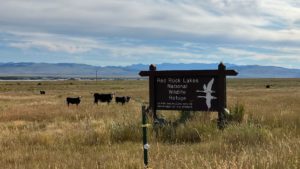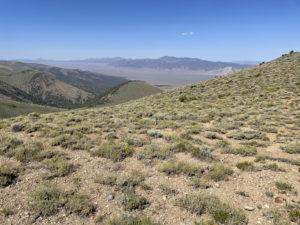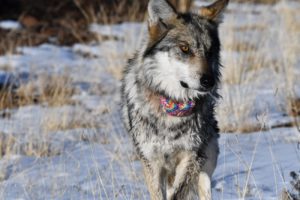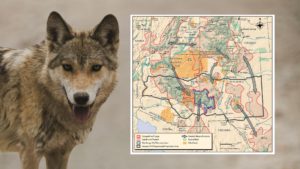FOR IMMEDIATE RELEASE
Wednesday, May 15, 2024
CONTACT
Chandra Rosenthal [PEER] (303) 898-0798, crosenthal@peer.org
Josh Osher [Western Watersheds Project] (406) 830-3099, josh@westernwatersheds.org
Livestock Leading Cause for Failing Minimum Landscape Health Standards
Washington, DC — New data from the U.S. Bureau of Land Management (BLM) paint a bleak picture of the ecological health of America’s vast public rangelands, according to a new analysis of agency records by Public Employees for Environmental Responsibility (PEER). The data, now accessible via PEER’s Rangeland Health Standards Map, show very large areas of BLM land do not meet the agency’s own Land Health Standards for minimum quality of water, vegetation, and soils, as well as the ability to support wildlife.
The PEER analysis looked at records from 1997 through 2023 for more than 21,000 BLM grazing allotments in ten Western states totaling about 155 million acres and found:
- More than 56 million acres of land assessed by BLM failed land health standards;
- On at least 37 million acres, livestock is identified as the major cause of failure. BLM has found that overgrazing is the biggest cause of land health failure across the West by far;
- Results varied widely by state, with Idaho reporting only 25% of its range meeting land health standards compared to an 83% success rate in next-door Montana; and
- Nine out of ten BLM state offices report that they are renewing more than half of the grazing permits for another ten years without National Environmental Policy Act review.
“Throughout much of the west, BLM lands are in poor ecological health due to livestock grazing,” remarked Rocky Mountain PEER Director Chandra Rosenthal. “Over a quarter of century of data reveal the systemic failure of BLM to adapt management practices that safeguard our public lands.”
Notably, BLM has not completed land health assessments on more than 36 million acres. The lack of assessments may mask even more extensive landscape damage, especially in a state like Nevada, which has the biggest slice of public range among any state but has a very high failure rate – more than three acres of Nevada range fail health standards for each one assessed as passing. (22:4) Nevada also has the biggest share (39%) of unassessed range.
A comparison of the new data versus pre-2019 BLM records shows some positive change, but overall, one third of the assessed lands failed minimum health standards during both periods.
“These are figures that BLM does not want the public to see,” added Rosenthal, pointing out that PEER has compiled this information through extensive Freedom of Information Act requests, some of which entailed litigation. “BLM should have information on every allotment available to land managers, ranchers, conservations, and researchers in real time.”
“When the Bureau rubber stamps grazing permits without environmental review, it’s avoiding accountability and failing to manage these lands for all Americans and not just the livestock industry. It’s a problem that has gotten worse instead of better during the Biden Administration,” stated Josh Osher, Public Policy Director for Western Watersheds Project.
PEER, Advocates for the West, and Western Watershed Project are suing BLM in federal court for its widespread delinquency in completing environmental assessments required by the National Environmental Policy Act and addressing resource damage caused by overgrazing across vast stretches of the American West. The suit seeks a court order to establish a schedule for finishing long overdue environmental analyses evaluating conditions on thousands of commercial livestock grazing allotments.
Earlier this month, BLM finalized a Public Lands Rule which elevated conservation in land management decisions, but according to agency officials, it will not affect livestock operations. The rule states that “lands have become increasingly degraded through the appearance of invasive species, prolonged drought, and habitat fragmentation,” but fails to mention that livestock grazing is the primary cause for land degradation in the West.
###
Look at the BLM Grazing Allotment Status Fact Sheet
Explore the Rangeland Health Standards Map
See what is happening in each Western state in PEER’s Rangeland Analysis, 1997-2023
Look at the PEER et al lawsuit






